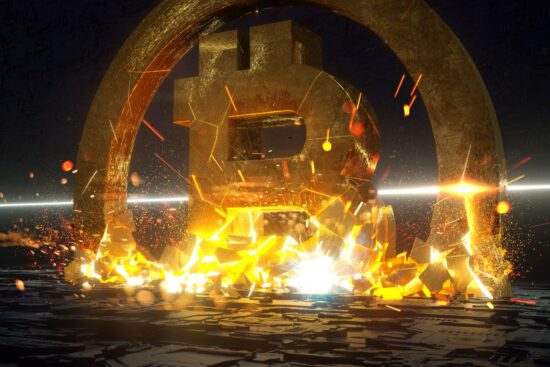
The world of blockchains is growing bigger and bigger. From its inception with Bitcoin, blockchain technology has expanded into a vast and complex ecosystem, encompassing thousands of platforms with diverse applications and uses.
The significance of blockchains in the modern world cannot be overstated. They are revolutionizing industries by providing decentralized and secure systems for transactions, data management & more. Finance, healthcare & supply chain management are some of the main industries where one can see the transformative impacts of Blockchain.
Witnessing the continuous rise of Blockchain in our world, many people want to know more about this technology. One of the frequently asked questions is, “How many blockchains are there?”
This question reflects the growing interest in understanding the depth of Blockchain among the general audience.
As a premier destination for Blockchain-related blog posts, we take responsibility for answering this FAQ. So, in today’s blog post, we will explore the different types of blockchains and over 1000 distinct blockchain platforms that exist today. In addition, we’ll also examine the unique features and purpose of each blockchain type.
How Many Blockchains Are There? (Your Frequently Asked Question That Covers Various Aspects)
The question “How many blockchains are there?” is very broad. If we have to answer this question accurately, we’ve to cover various aspects of blockchains. That’s why, in the introduction, we wrote how this blog post will encompass several dimensions, including the types, purposes, and specific platforms within the Blockchain. Here’s a draft of what we’ll discuss in the blog post.
1. Types of Blockchains
1.1 Public Blockchains
1.2 Private Blockchains
1.3 Hybrid Blockchains
1.4 Consortium Blockchains
2. Number of Distinct Blockchain Platforms
3. Key Factors in the Blockchain Ecosystem
3.1 Cryptographic Security
3.2 Smart Contracts
3.3 P2P Network
3.4 Immutability
3.5 Distributed Ledger
So, without further ado, let’s delve straight into the blog.
1. Types of Blockchains
A decentralized and public digital ledger distributed among nodes (devices such as computers or servers) to facilitate secure transactions is known as a Blockchain. It was created by Satoshi Nakamoto in 2008. Blockchains are transparent and immutable digital ledgers that resist tampering and fraud. Due to this, they are known as a revolutionary technology. There are four types of blockchains. Each blockchain type is explained below.
1.1 Public Blockchain
As the name ‘Public Blockchain’ suggests, it is a nonexclusive, permissionless, and non-restrictive digital ledger system. All you need is an internet connection to get your node (computer) signed as an authorized one. Since it is a permissionless system, you can easily access, read, or proofread current and past records in it. Moreover, its decentralized nature allows you to store no information in one place.
Example:
Bitcoin is the first and most well-known example of a public blockchain. Even the whitepaper on which it was created was titled “Bitcoin: A Peer-to-Peer Electronic Cash System.”
Pros:
Independence
Transparency
Cons:
Scalability Issues
Slow-Network
1.2 Private Blockchain
Private Blockchain is the exact opposite of Public Blockchain. It is a digital ledger system where access to read, write, or participate in the network is restricted to a specific group of participants. Unlike public blockchains, private blockchains are permissioned and work like a closed network. Private Blockchains are also known as enterprise blockchains, as they are primarily operated within companies.
Example:
Quorum is the best example of a Private Blockchain.
[Quorum is an enterprise-focused blockchain platform developed by JPMorgan Chase].
It has the highest level of privacy features and tailored governance models, making it suitable for enterprise applications.
Pros:
Access Control
Fast-Working
Cons:
Trust
Auditability & Less Security
1.3 Hybrid Blockchain
If we had to explain ‘Hybrid blockchain’ in simple words, we would definitely describe it as a combination of Public and Private Blockchain.’
It is a digital ledger system where you can set up both restrictive & non-restrictive Blockchains. Thus, it offers the freedom to categorize the nodes to which you want to grant permission to access data.
In Hybrid Blockchains, records and transactions aren’t made public. However, they can be verified with the help of smart contracts.
Example:
A suitable example of Hybrid Blockchain is Polkadot.
[Polkadot is a next-generation blockchain platform designed to facilitate interoperability between multiple blockchains]
It shows such an innovative approach to blockchain technology by offering top-tier security and governance features.
Pros:
Access Control
Cheap & Fast Transactions
Cons:
Less Transparent
Upgrading
1.4 Consortium Blockchain
Also known as ‘Federated Blockchain,’ Consortium Blockchain is a semi-decentralized system (similar to Hybrid Blockchain). That’s why it is popularly described as ‘A Hybrid Model.’ Consortium Blockchain allows multiple organizations with shared interests or goals to work on one platform.
You might be confused about how ‘Consortium Blockchains are Different from Hybrid Ones.’ Okay, let us clarify your confusion.
Hybrid blockchains have different models for their public and private layers. However, Consortium Blockchains are governed collectively by a predefined group of trusted organizations or entities.
Example:
One prominent example of a Consortium Blockchain is Hyperledger Fabric.
[Hyperledger Fabric is an open-source blockchain framework hosted by the Linux Foundation’s Hyperledger project]
Pros:
Access Controls
Secure & Scalable
Cons:
Less Transparent
By reading until up here, if you think you got an answer to your FAQ ‘How many blockchains are there,’ you’re wrong. Besides these four types of blockchains, there is more to discuss.
2. Number of Distinct Blockchain Platforms
Blockchain technology is reaching new heights every new day. As of 2024, there are over 1,000 blockchain platforms. In an effort to offer an accurate answer to your FAQ, ‘How many blockchains are there?’, we have included the top 30 blockchains platforms in this section of the blog. The following are the top 30 blockchain platforms that you should know about.
NOTE: This list does not have an official ranking. The blockchain platforms mentioned below are popular ones, which a blockchain enthusiast should know about.
| No. | Blockchain Platforms | Ledger Type |
| 1. | Bitcoin (BTC) | Public Ledger |
| 2. | Ethereum (ETH) | Public Ledger |
| 3. | Binance Smart Chain (BSC) | Public Ledger |
| 4. | Cardano (ADA) | Public Ledger |
| 5. | Solano (SOL) | Public Ledger |
| 6. | Polkadot (DOT) | Multi-Chain Ledger (Hybrid) |
| 7. | Chainlink (LINK) | Public Ledger |
| 8. | Stellar (XLM) | Distributed Ledger (Hybrid) |
| 10. | Tezos (XTZ) | Liquid Proof of Stake (LPoS) (Public Ledger) |
| 11. | EOSIO (EOS) | Public Ledger |
| 12. | Avalanche (AVAX) | Byzantine Fault Tolerance (BFT) (Public) |
| 13. | Filecoin (FIL) | Public Ledger |
| 14. | Polygon (MATIC) | Public Ledger |
| 15. | VeChain (VET) | Public Ledger |
| 16. | Theta Network (THETA) | Multi-Level BFT (Byzantine Fault Tolerance) (Public) |
| 17. | Tron (TRX) | Delegated Proof of Stake (DPoS) (Public) |
| 18. | Dogecoin (DOGE) | Public Ledger |
| 19. | NEM (XEM) | Distributed Ledger (Hybrid) |
| 20. | Tether (USDT) | Public Ledger (Issued on Multiple Blockchains) |
| 21. | Uniswap (UNI) | Public Ledger |
| 22. | Curve Finance (CRV) | Public Ledger |
| 23. | IOTA (MIOTA) | Directed Acyclic Graph (DAG) (Public) |
| 24. | Ontology (ONT) | Public Ledger |
| 25. | Waves (WAVES) | Leased Proof of Stake (LPoS) (Public) |
| 26. | Maker (MKR) | Public Ledger |
| 27. | Dai (DAI) | Public Ledger |
| 28. | Celsius (CEL) | Public Ledger |
| 29. | Dash (DASH) | Masternode Proof of Stake (MPoS) (Hybrid) |
| 30. | Zcash (ZEC) | Public Ledger with Optional Privacy |
3. Key Elements in the Blockchain Ecosystem
The blockchain system is a complex network comprising various elements that interact to create a decentralized and secure system. Thus, understanding the key elements is essential to know the full scope of the blockchain system. Also, understanding these elements will clear your doubts about the question, ‘How many blockchains are there?’. As mentioned earlier, an answer to this question is broad. To get a complete answer, you may need to delve into different topics.
So, make an effort to read this.
3.1 Cryptographic Security
Cryptographic Security refers to the application of cryptographic techniques to secure information and communications in a system. They ensure the authenticity and integrity of transactions through the use of public & private keys.
3.2 Smart Contracts
Self-executing contracts with terms directly written into code (e.g., Ethereum) are called Smart Contracts. The main aim of Smart Contracts is to eliminate the need for middlemen or intermediaries and foster a speedy platform’s functioning.
3.3 P2P Network
As mentioned in the first section of the blog post, blockchains facilitate transactions between two or more two groups sharing a common interest without any intermediary. Thus, blockchains can be referred to as P2P (Peer-to-Peer) Networks.
3.4 Immutability
On the blockchain network, transactions are immutable (meaning they cannot be edited, altered, or deleted). However, if a transaction shows an error, you can add a new transaction by reversing the error.
3.4 Distributed Ledger
The point may not need much explanation. Blockchain networks are distributed ledgers, allowing the facilitation of all transactions and their record within the network participants only.
Summary: How Many Blockchains Are There?
Blockchain technology is getting wider with each passing day. Many people often have common doubts regarding blockchain technology. On seeing the Google Trends, ‘How many blockchains are there?’ emerged as a frequently asked question (FAQ).
So, we’ve dedicated a full-fledged blog to clear all your doubts regarding the question, ‘How many blockchains are there?’. In this blog, we kicked things off by discussing four types of blockchains, namely,
Public Blockchains
Private Blockchains
Hybrid Blockchains
Consortium Blockchains
Then, we have dedicated a section to estimating the existence of 1000+ blockchain platforms as of 2024. The top 30 blockchain platforms are mentioned in the blog, as every enthusiast should know about them.
At last, we unravel five of the significant elements of blockchain technology. Understanding these key factors is essential to answering your FAQ, ‘How many blockchains are there?’
If you want to read more informative blog posts about Blockchain, stay tuned with us. As a premier destination for blockchain insights, we aim to elevate your knowledge and keep you updated on the latest trends and developments.
More FAQs
Q-1. How many blockchain companies are there in the world?
Ans: There isn’t any official stat for this. However, according to recent estimates, 10,000 verified blockchain companies are operating globally. This number includes startups and established companies in various sectors (finance, healthcare, supply chain, etc.).
Q-2. How many blockchain developers are there?
Ans: According to Electric Chapel’s 2022 analysis, 23,343 active blockchain developers were active. Based on the growing rate, it can be predicted that this number may reach 1 million by 2030. This data was from 2022 when the world was healing from the COVID-19 pandemic. Since the pandemic was officially over in all countries in 2024, this number has witnessed a growth of around 9%.






